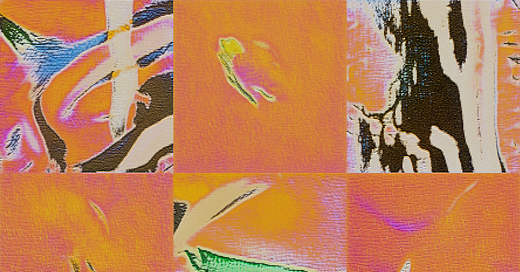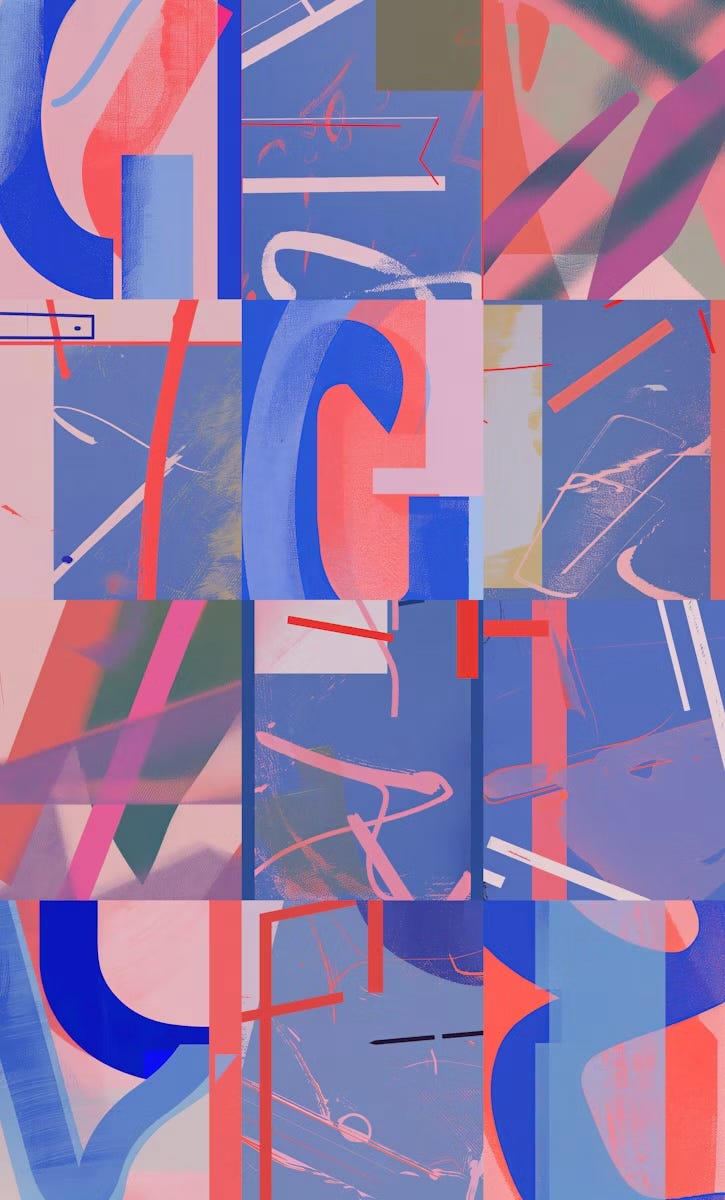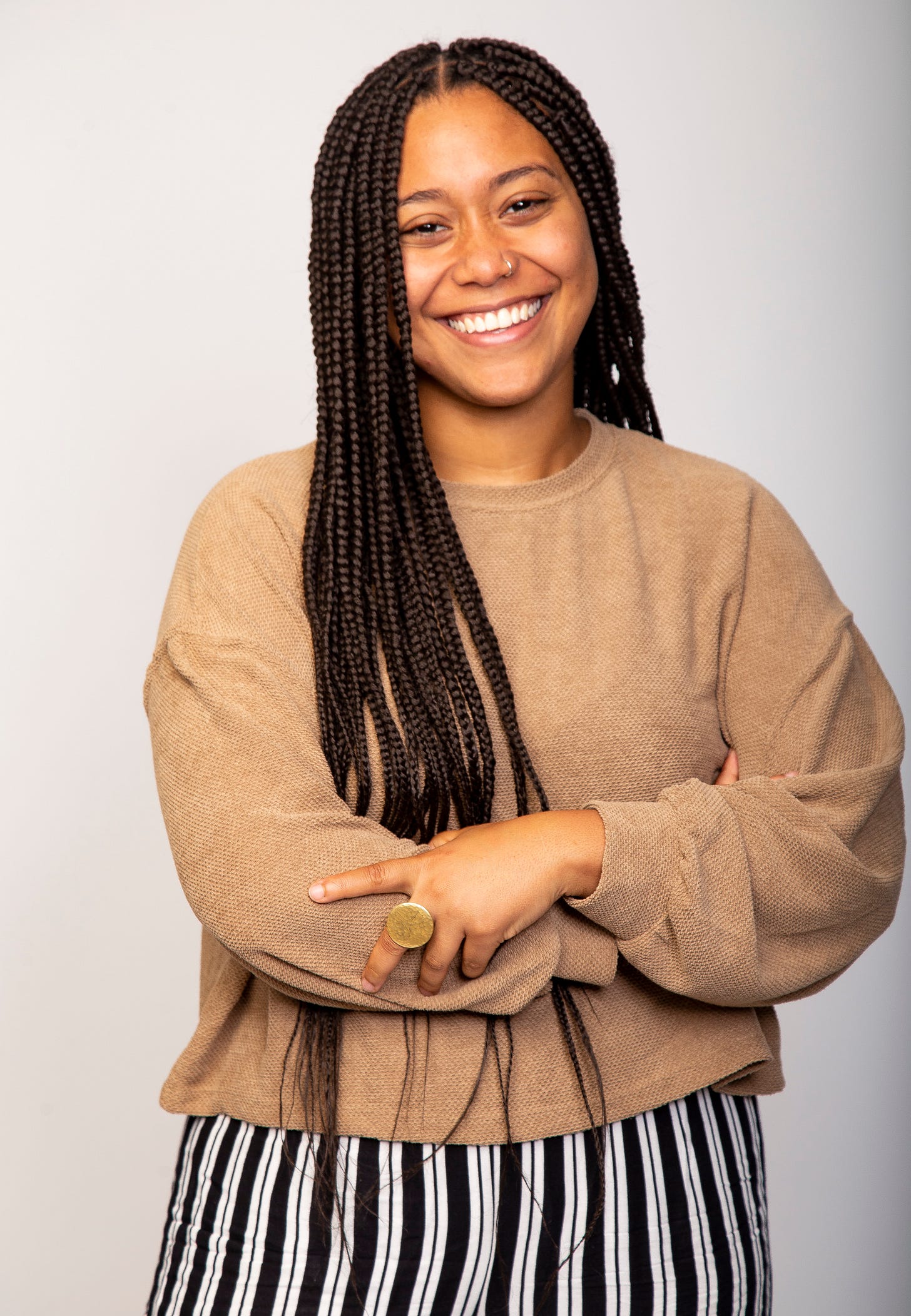AI Art Questionnaire: Linda Dounia
10 Questions on AI and Art to Explore the Intersection of Creativity and Technology
This is the first interview in the form of a questionnaire in a series of conversations about AI and art. Kicking things off is Senegalese artist Linda Dounia, who was recognized in 2023 on the TIME AI 100 list of the most influential people in AI for her work on speculative archiving. As we define the futures we want, artists play a crucial role, says Dounia, in envisioning alternative possibilities and exploring both the positive and negative aspects of AI.
Anika Meier: When did you first learn about AI?
Linda Dounia: I first came across AI through the work of the Algorithmic Justice League, founded in 2016 by Joy Buolamwini. I learned about some troubling use cases of AI (filtering out good job applications, mislabeling innocent people as criminals, etc.) and had no idea that models were being trained with art. When I discovered this, I wanted to find out for myself how AI worked and whether I could make it something softer or more benign.
AM: What did you think about AI back then?
LD: Well, I was only reading about AI used for surveillance and in the context of work automation, so I didn't feel great about it. The more I learned about its biases (which reflected humanity's biases because AI is trained on our content), the angrier I felt. I guess, though, that this anger pushed me to keep learning about it until I eventually found its application to art. It started with an article about Mario Klingemann's “Memories of Passersby I” and led me down the rabbit hole of what a GAN was and how I could learn to train one.
AM: Has your opinion about AI changed?
LD: On the bias front, not so much. I think we're generally a bad species at thinking outside of ourselves and our own bubbles. So we've made this technology thinking that by training it on everything we've produced on the internet, it would reflect us. To an extent, it does. It just doesn't reflect all that we are. The world is mind-bogglingly diverse. If you handed aliens our databases used to train AI, they probably wouldn't guess just how vast, weird, and beautiful we actually are.
On the possibilities that this technology presents for tinkering, though, my mind has very much changed. I really believe that technology is made great when you let a bunch of people mess with it and push it to the point of breaking. There is something about forcing different perspectives on tech that reveals just how interesting and divergent it can be. I think this phase, where AI is still narrow enough that different people approach it with a variety of ideas/perspectives and cobble up their own Frankenstein versions of it, is very important for AI. For one, in the past few years, there's been a shift where AI is mostly made and distributed by for-profit companies that are really good at making it useful for productivity. Sure, that's one narrative for it, but artists are building more expansive narratives with a fraction of a fraction of these companies' budgets and a whole lot more whimsy.
AM: What's your favorite book about AI?
LD: Currently, it's “The Atlas of AI” by Kate Crawford. It's become more of a manual of references for me at the moment because I am interested in what goes on behind the screen when we are prompting for better-sounding emails or, in my case, training for days (rare minerals, labour, hardware, policy, e-waste management, etc.). I am working on a series of installations on this topic, so I am always carrying the book around.
I will say that I am overcome with guilt every time I do anything on my computer now because of it, but I am also grateful for it. I think it's good to sit with the discomfort of knowing the way things are done sucks. To borrow from my favorite author, that's the feeling that helps breed a revolution of the mind and leads to small and big acts of dissent. The world always needs those, and I think artists are very good at them.
AM: Who is your favorite thinker on AI?
LD: I have two. Well, three, considering one is a duo. The first is Holly Herndon and Mat Dryhurst. I love the way they approach AI and grapple with the difficult questions it poses, especially regarding consent. Their work exemplifies a vision for AI that I can support: one that advocates for smaller models reflective of authentic perspectives, which in turn preserve our ability to make training data stronger, more personal, and less intrusively mined. By the way, Mat’s tweets are a treasure trove of ideas and excellent rants.
The other thinker, and this is probably controversial, is Ted Chiang. I may be biased because he is a magician with words and I love his books, but I believe it’s important to listen to people with whom we don’t entirely agree. He has been publishing a series of essays on AI, and while I agree with many of his ideas, I fundamentally disagree with others. AI is far from perfect, and he has a way of exposing these imperfections—like the averaging effect, for example—in ways that help us feel the urgency necessary to be at least cautiously optimistic, and at best, to address them.
AM: How did you get started working with AI as an artist?
LD: Curiosity. I was really just curious about what I could train a model on and how that would turn out. The first GAN I ever trained was with my acrylic paintings that I scanned over the years. It was exhilarating. Until then, I only understood the importance of a good dataset for training intellectually. However, having to cobble together my own dataset made me feel the issues I had only read about viscerally. Garbage in, garbage out, right? There was a lot of garbage output before I finally reached a stage where I thought, "Okay, this is not completely messed up; I can do something with it."
AM: What is your first AI artwork?
LD: The first one I consider a complete work is “Sahel: Rose Rhythm”. It has that recognizable GAN aesthetic but manages to convey the painterly quality of the data it’s trained on (my actual paintings). I remember feeling a sense of place when I finished training the model, where the outputs came from—a feeling of familiarity within the synthetic outputs that I had not expected; it was as if, in another life, I might have painted the outputs myself.
I was re-reading some of Ousmane Sembene’s work at the time, and this quote perfectly captured the experience I had working with the model: “The women had not stopped singing. As soon as one group allowed the refrain to die, another picked it up, and new verses were born at the hazard of chance or inspiration, one word leading to another and each finding, in its turn, its rhythm and its place.” I thought this is definitely what working with AI feels like to me—a generative experience where something new happens at every checkpoint, such that it can go on and on forever.
AM: What is your most recent AI artwork?
LD: Any one of the 50 videos from “Once Upon A Garden: The Complete Series”. I have been working on using AI to imagine what critically endangered and extinct flora from the Sahel—of which we have little to no photographic records—might have looked like. I started in 2021 and have been revisiting it over the years each time there is a new improvement in AI image-making. I don’t think I intended for this exploration to last this long, but I just kept being curious. The series eventually became somewhat didactic, tracing the evolution of how advanced AI has become over the years at making an image from the same training data.
Each bouquet contains five items—from the first ever made between 2021 and 2022 to the last in 2024. It goes from GAN to various capabilities of diffusion models (text to image, image to image, text + image to image) and ends with video generation (text + image to video). The series also exposes just how poorly we are recording the extensive loss of wildlife, especially in certain parts of the world. This brings us back to a more general issue we have with the data we use to train AI—it’s missing or overlooking a great deal.
AM: What do you dislike about the current conversation regarding AI and art?
LD: I have noticed a polarization where artists using AI feel they must defend it in order to justify their use. I have always felt conflicted about AI, and I am actually glad about that; leaning into this discomfort is what has made working with it interesting. I am as curious about the gaps and difficult truths as I am about the creative potential. I am also under no illusion that AI might someday become good enough to replace at least some of the things I do. It really doesn’t have to be one or the other. In fact, I think if people around the world are talking about AI (and criticizing it so much), it’s because artists have exposed so much of what it can do. I remember when DALL-E came out before ChatGPT, and the questions that smaller communities of scientists and artists were asking became top of mind for seemingly everyone on the internet: Is this real? Can it be creative? Will it replace me? You do not have to believe in a transhumanist future or one where AI kills us all. We are in a period where we still get to define the futures we want and how we see AI intervening in them. Artists are really good at conjuring up alternative futures, and that means grappling with the good, the bad, and the undecided when it comes to AI.
AM: Who are your favorite AI artists?
LD: This list keeps growing, and I will probably miss some people. I will say that many of them channel something that really resonates with me: saudade.
I love Noper’s meditations on the grounding chaos of nature. I love Adaeze Okaro’s futuristic take on traditional ceremonies. I love how Niceaunties pays homage to auntie culture from Singapore, in all its glory and extravagance. I love Minne Atairu’s recent explorations of black magic symbolism in Nollywood films. I love Sasha Stiles’ poetry that searches for the feeling under the machine. I love how Sheldrick brute-forces AI to understand an era of South Korean culture that went largely undocumented (and the lengths he goes to acquire images about it). Each of these perspectives is so specific and intimate, and they provide a glimpse of what is, for me, the true creative potential of AI: telling stories that would otherwise go untold in the way we remember them.
BIO
Linda Dounia is a Senegalese artist and designer who investigates the philosophical and environmental implications of technocapitalism. She is inspired by science fiction, speculative design, solarpunk, and degrowth.
Her work mediates her memories as alternative truths and evidence of excluded ways of being and doing. It is formed through the dialogue (and tensions) between analog and digital mediums.
In 2023, Dounia was recognized on the TIME AI 100 list of most influential people in AI for her work on speculative archiving – building AI models that help us remember what we have lost.







